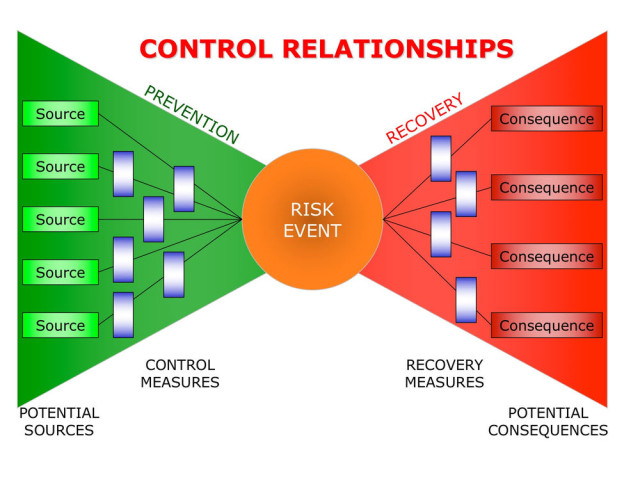
Risk management expert with over 25 years' experience working with high-risk industries on operational risk management, enterprise risk management and critical control frameworks.
Lead Incident Investigator and Lead Auditor.
Available For: Advising, Authoring, Consulting, Influencing, Speaking
Travels From: Sydney, Australia
Speaking Topics: Risk Management, Critical Control Management, Incident Investigation
| Jessica McClure | Points |
|---|---|
| Academic | 10 |
| Author | 76 |
| Influencer | 17 |
| Speaker | 0 |
| Entrepreneur | 10 |
| Total | 113 |
Points based upon Thinkers360 patent-pending algorithm.
 Unconceivable Risks: Overlooking the Unimaginable
Unconceivable Risks: Overlooking the Unimaginable
Tags: Business Continuity, Health and Safety, Risk Management
 Everything DiSC Certification- Classroom
Everything DiSC Certification- Classroom
Credential ID 0000031722
Tags: Business Continuity, Health and Safety, Risk Management
 NSW Government Extends Mental Health Support to Additional Frontline Workers
NSW Government Extends Mental Health Support to Additional Frontline Workers
Tags: Business Continuity, Health and Safety, Risk Management
 Discomfort is Critical to Effective Risk Management
Discomfort is Critical to Effective Risk Management
Tags: Business Strategy, Leadership, Risk Management
 Are Your Controls Too Complex for Workers to Understand?
Are Your Controls Too Complex for Workers to Understand?
Tags: Business Continuity, Health and Safety, Risk Management
 The Fundamental Flaw of the Risk Matrix Tool
The Fundamental Flaw of the Risk Matrix Tool
Tags: Health and Safety, Project Management, Risk Management
 Understanding Control Failure
Understanding Control Failure
Tags: Business Continuity, Health and Safety, Risk Management
 Velocity: Why Speed Matters in Risk Management
Velocity: Why Speed Matters in Risk Management
Tags: Business Continuity, Health and Safety, Risk Management
 Enhancing Administrative and PPE Controls with Engineered Reliability
Enhancing Administrative and PPE Controls with Engineered Reliability
Tags: Business Continuity, Health and Safety, Risk Management
 Risk 101: Understanding the Basics of Risk Management
Risk 101: Understanding the Basics of Risk Management
Tags: Business Continuity, Health and Safety, Risk Management
 The Importance of Independent Risk Professionals in Project Management
The Importance of Independent Risk Professionals in Project Management
Tags: Business Continuity, Project Management, Risk Management
 Unconceivable Risks: Overlooking the Unimaginable
Unconceivable Risks: Overlooking the Unimaginable
Tags: Business Continuity, Health and Safety, Risk Management
 Why We Developed Investigative Risk Management — and Why Your Organisation Needs It
Why We Developed Investigative Risk Management — and Why Your Organisation Needs It
Tags: Business Continuity, Health and Safety, Risk Management
 Psychosocial Hazards: The People We Sometimes Forget
Psychosocial Hazards: The People We Sometimes Forget
Tags: Health and Safety, Mental Health, Risk Management
 Bridging Risk Management and Incident Investigations: A Continuous Cycle of Improvement
Bridging Risk Management and Incident Investigations: A Continuous Cycle of Improvement
Tags: Business Continuity, Health and Safety, Risk Management
 Why Dynamic WHS Systems Will Replace Traditional Systems
Why Dynamic WHS Systems Will Replace Traditional Systems
Tags: Business Continuity, Health and Safety, Risk Management
 Embracing Chronic Unease in Workplace Safety: A Guide to Proactive Awareness
Embracing Chronic Unease in Workplace Safety: A Guide to Proactive Awareness
Tags: Business Continuity, Health and Safety, Risk Management
 Workplace Health and Safety Management Systems
Workplace Health and Safety Management Systems
Tags: Business Continuity, Health and Safety, Risk Management
 SRA Global | Orana Skills Centre
SRA Global | Orana Skills Centre
Tags: Business Continuity, Health and Safety, Risk Management
Date : April 03, 2025
 Risk Management Audit
Risk Management Audit
Location: Virtual Fees: $135/hr
Service Type: Service Offered
 Risk and Critical Control Management
Risk and Critical Control Management
Location: Virtual Fees: $135/hr
Service Type: Service Offered
Location: In Person Fees: 5500
Service Type: Service Offered
 NSW Government Extends Mental Health Support to Additional Frontline Workers
NSW Government Extends Mental Health Support to Additional Frontline Workers The Fundamental Flaw of the Risk Matrix Tool
The Fundamental Flaw of the Risk Matrix Tool Are Your Controls Too Complex for Workers to Understand?
Are Your Controls Too Complex for Workers to Understand? Unconceivable Risks: Overlooking the Unimaginable
Unconceivable Risks: Overlooking the Unimaginable Introduction to Investigative Risk Management
Introduction to Investigative Risk Management